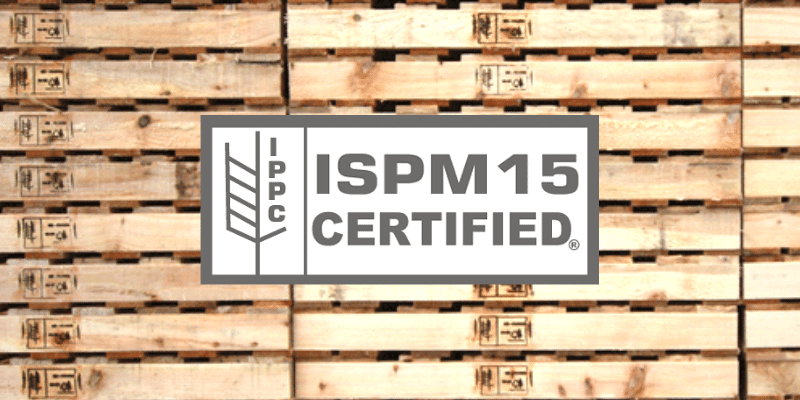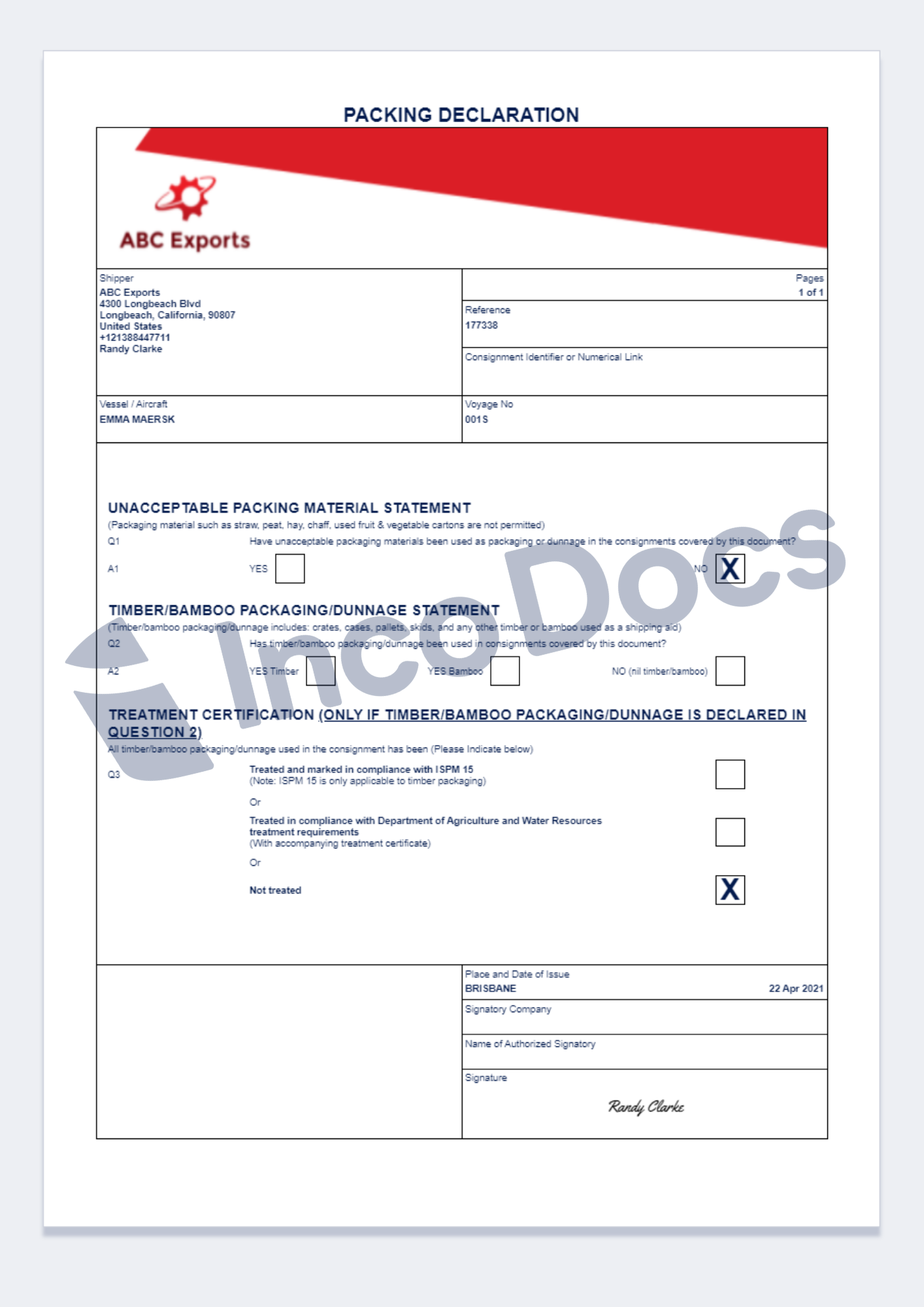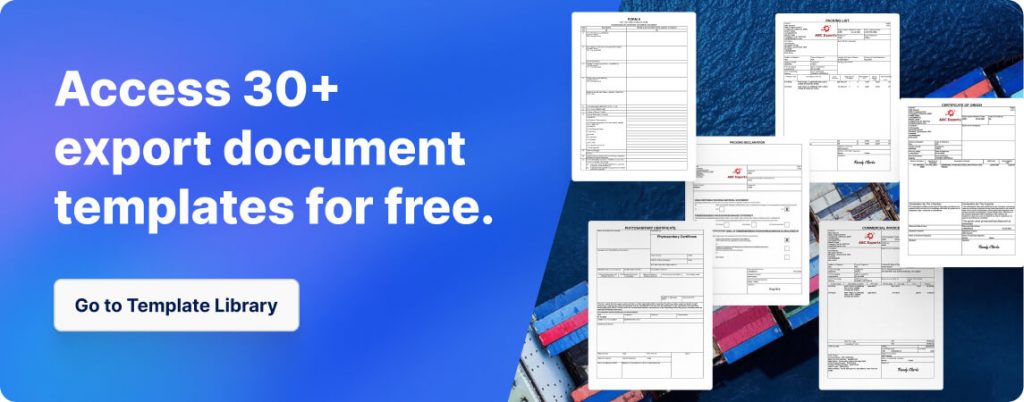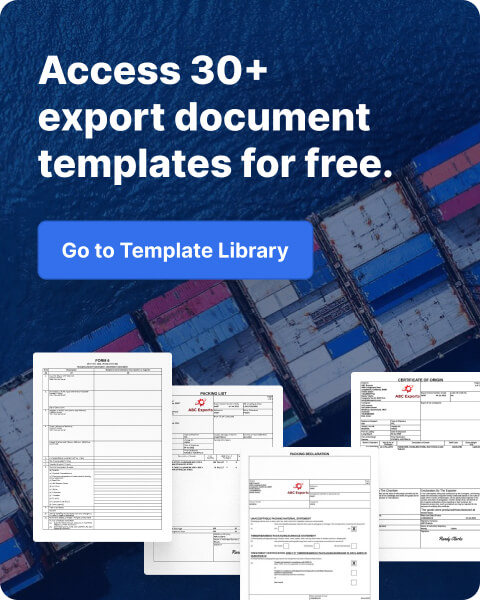See below example of a Packing Declaration created using IncoDocs.
An export packing declaration is an important document that states the type of packaging materials that are used to pack goods inside shipping containers for export. The Packing Declaration document is to ensure that any timber packaging used are ISPM15 compliant, to protect the spread of insects and disease which can be hiding away in timber packing materials such as pallets, create and dunnages.
The shipper will have to provide a statement on company letterhead which states the type of packing materials used and if they have been treated or marked in compliance with ISPM15 or DAFF fumigation treatment requirements. They are commonly used for shipments into Australia and New Zealand.
See below example of a Packing Declaration created using IncoDocs.
ISPM 15 is a wood treatment standard that address the need to treat wood materials that are used to ship products between countries. If you are using this type of packaging to pack and export your goods then you must ensure that the materials are debarked and correctly heat treated or fumigated with methyl bromide and then stamped with the ISPM marking. Below is an example of pallets which have already been heat treated and stamped with the ISPM15 markings. ISMP15 Export compliant pallets and packaging are available from local suppliers.

If you export your products and have used timber packaging that has not had the correct treatment or ISPM stamping it can cause some big problems when it arrives into the country of destination. The shipment can be pulled aside and correctly treated and inspected at the port of delivery before it will be cleared through customs, which can be quite expensive and may incur fines for not complying to rules and regulations.
In the worst cases, shipments can be refused entry into the country or completely destroyed. Your freight forwarder will be able to arrange the correct treatment and supply you with a fumigation/treatment certificate that you can pass onto your buyer to prove the goods have been correctly treated.
Exemptions from ISPM15
Most other packing products are exempt from this ISPM15 treatment. It is important to note that other wood panel products such as plywood and hardboard do not require ISPM15 treatment as they are not a raw timber material, they have already been treated through a manufacturing process which eliminates the risk of insects and diseases living inside.
Other materials such as papers and plastics are also exempt from this treatment. Wood packaging that is made from thin wood (less than 6mm) will be exempt from requiring treatment.
How do you create an Export Packing Declaration document? See below example template and questions to answer.
A packing declaration form template will include answers to the 3 questions below, plus a container cleanliness statement:
1 – UNACCEPTABLE PACKING MATERIAL STATEMENT
(Packaging materials such as straw, bamboo, pear, hay, chaff, used fruit and vegetable cartons are not permitted)
Have prohibited packaging materials or bamboo products been used as packaging or dunnage in the consignment covered by this document?
2 – TIMBER PACKAGING / DUNNAGE STATEMENT
Has solid timber packaging/dunnage been used in consignments covered by this document?
3 – TREATMENT CERTIFICATION (ONLY IF TIMBER/DUNNAGE IS DECLARED IN QUESTION 2)
(Timber packaging/dunnage includes: crates, cases, pallets, skids and any other timber used as a shipping aid.)
All timber packaging/dunnage used in the consignment has been (select treatment type).
CONTAINER CLEANLINESS STATEMENT
The container(s) covered by this document has/have been cleaned and is/are free from material of animal and/or plant origin and soil.
The export packing declaration form will also include company name, date, authorized signatory and signature. Use IncoDocs to create and download your export packing declaration form for International trade.










